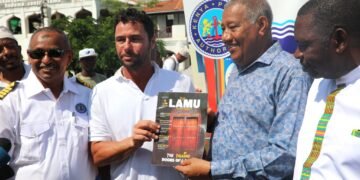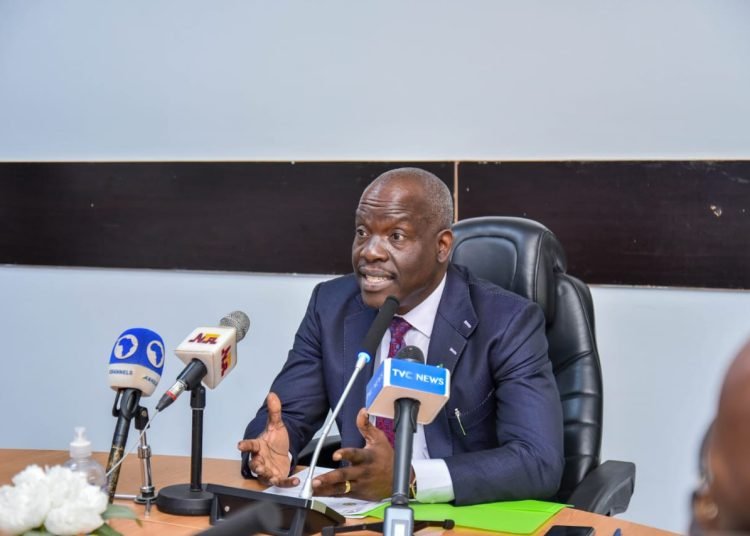Between the last quarter of 2021 and the third quarter of 2022, 274 export permits were granted to various firms for a total of 480,863,863 barrels of crude oil and condensates, the Nigerian Upstream Petroleum Regulatory Commission (NUPRC) had said in a statement.
According to his statement during a briefing to mark the commission’s of its one-year anniversary, the Chief Executive of the NUPRC, Mr Gbenga Komolafe, stated that during the period, 47 Petroleum Prospecting Licences (PPLs) were granted winners of the last marginal field awards. At the time , 57 oil fields were put up for bidding.
The commission’s chief executive explained that the team has been focused on laying a solid foundation for its regulatory functions and in pursuing that, has drafted Environmental Remediation Fund Regulation and the Upstream Environmental Regulation and Upstream Petroleum Safety Regulation, both of which have been subjected to stakeholders’ review.
In addition, Komolafe noted that the commission also successfully launched the Host Communities Regulations to guide the implementation and operationalisation of the Host Communities Development Trust (HCDT), as enshrined in the Petroleum Industry Act (PIA).
With the declaration of the nation’s oil reserves which stands at 37.046 billion barrels, indicating an increase of 0.37 per cent compared to 2020 figures, the chief executive explained that the life index now stands at 60 years.
Furthermore, Komolafe said that Nigeria’s gas reserves had been pegged at 208.62 TCF, indicating an increase of 1.01 per cent compared to 2020 figures, with a life index of 88 years. That would be without new discoveries.
He explained that the NUPRC had also almost completed the automation of upstream work processes which would improve the efficiency and become operational before the end of year 2022.
Other achievements in the last one year, Komolafe said, included the Ikike first oil which was officially celebrated in September 2022 and expected to deliver peak production of 50,000 barrels of oil equivalent per day by the end of the year.
He stressed that the deployment and commissioning of Aiteo 120kbd barge mounted crude oil processing facility to minimise crude oil theft and vandalism as well as the deployment and commissioning of Tenoil 10kbd Early Production Facility (EPF) were some of the milestones during the period.
In addition, Komolafe listed the regularisation and commissioning of Halkin 5kbd EPF at Atala OML-46 as well as the inauguration of an integrated industry-wide study to ascertain shut-in wells as part of the achievements in the last one year.
According to him, the primary aim of the study is to boost production and guide investment planning and recommend low hanging potential to boost national production, with the report now at the writing stage.
The development of the Advanced Cargo Declaration Regime, Crude Oil and LNG Tracking (COLT) and the establishment of ELI-AKASO crude oil export terminal as well as publishing of up-to-date data on national crude oil production on the commission’s website , he noted , were also key triumphs for the NUPRC.
“In line with the provisions of Section 108 of the PIA 2021, we have commenced engagement and sensitisation of all operators to submit gas flare elimination and monetisation plan.
“Ten high impact technologies, innovation, and solutions have been successfully qualified and adapted into the Nigerian oil and gas industry. The high impact technologies aim to increase oil discovery and production, reduce cost of pipeline maintenance and integrity threshold etc.
“In the area of exploration and acreage management , the commission has so far achieved the following: Award of 47 PPLs to winners of marginal fields during the 2020 marginal field bid round.
“Also is the development of model licence and model lease in conjunction with Legal and Compliance and Enforcement (C&E) SBU and renewal of OMLs 128, 130, 132, 133 and 138,” he pointed out.
Noting that the Host Communities Development Trust Fund (HCDTF) is now law, he explained that an automated reporting, monitoring, and data management portal has also been launched.
“Settlors have already commenced submission of applications on the portal; we have had successful engagements for the assignment of littoral communities to deep water operators with reference to regulation 6(1) (d) of the Host Communities Development Regulations (2022).
“Modalities for the assignment of littoral host communities to deep offshore operators have been worked out. Also, the Commission is working in synergy with the National Boundary Commission (NBC) to map the littoral host communities to deep water operations,” he informed.
Under his stewardship, Komolafe stated that a new model to estimate the value of assets and determine the signature bonus, renewal bonus and good and valuable consideration was developed with the renewal bonus valuation completed for OML 125, 128, 132, 133, 138 and 130.
Looking ahead, he stated that the commission projects in the next one year to embark on the development of a regulatory framework to reduce facilities development projects delivery costs through effective participation and regulation of concept, design and equipment selection.
He stated that when the new host communities development law which is already in operation, is implemented under the new PIA, many of the communities who are currently agitated will be taken care of, promising that the host communities will be carried along and will see that government reckons with them as critical stakeholders.
He stated that by December the committee set up to aggregate the accurate quantity of oil produced, exported or stolen will submit its report, stressing that the NUPRC remains committed to transparency in the sector.
Komolafe explained that the commission despite sundry challenges has met and exceeded its revenue projections to the federation, but revealed that the biggest challenge so far remains oil theft in the country.
He stressed that the nation has the capacity to meet its Organisation of Petroleum Exporting Countries (OPEC) production quota, adding that between 80,000 bpd to 100,000 bpd were lost to direct theft, while the rest was as a result of shut-ins.






























































